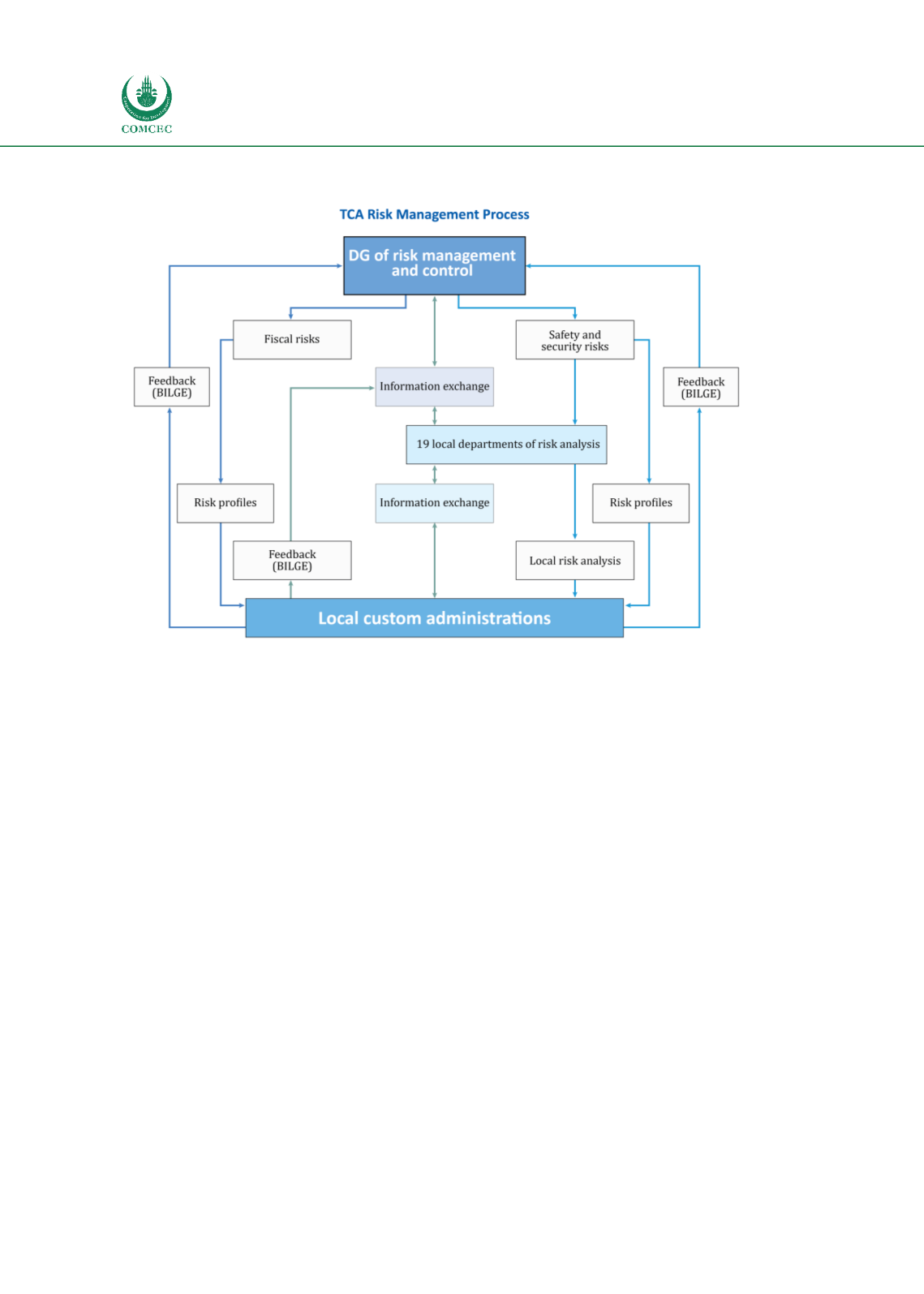

Facilitating Trade:
Improving Customs Risk Management Systems
In the OIC Member States
108
Figure 36: TCA Risk Management Process
Source: Turkey Customs Administration
The TCA has implemented the entire risk analysis cycle.
5.1.4.1
Risk assessment process (identification, analysis, and prioritization)
The risk identification process mainly looks at two types of risks based on the organizational
structure described previously; revenue risk and safety and security risk. The information is
exchanged on three levels: between central and local RA Department; between central RA
department and Intelligence Department; and between local RA departments and central RA
department. To identify risks, the RA department uses the data gathered from;
Software and databases used by TCA: BILGE (Customs Declaration Processing System),
GUVAS (Customs Data Warehouse) and Smuggling Information Database;
Risk Information Forms (paper forms sent by local customs offices and other relevant
units of the Ministry);
Other Governmental Institutions and Agencies (such as Ministry of Economy, Ministry
of Food, Agriculture, and Livestock, Ministry of Finance, etc.);
International Institutions (Such as UN Security Council, UN Office on Drugs and Crime,
SELEC, etc.).
To identify possible risks, the TCA uses customs data warehouse (GUVAS) that integrates pre-
arrival summary declarations, detailed declarations, NCTS declarations, TIR/transit tracking
program, electronic trade customs declarations, land border gates program, and a smuggling
database that collects all data related to seizures (Figure 37).
















